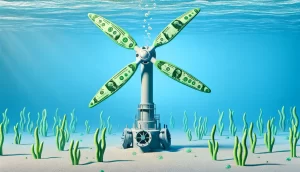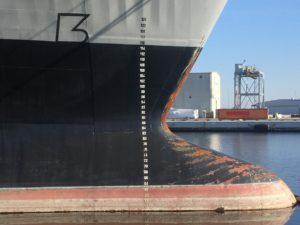Death and taxes are two things you can’t escape in life, but at least the latter can be used to fund advancements in marine renewable technology. This is the role of the Water Power Technologies Office, helping to form a narrow bridge over the feared funding gap on the path to commercialization of a technology. I was interested in learning what kind of research the Office is supporting, so I attended a Peer Review of the Department of Energy’s portfolio last week to investigate.

Government funding is similar to Russian Matryoshka dolls: it gets smaller the deeper you go. Of the overall Federal budget only a small portion goes to the Department of Energy. An even smaller portion of that goes to the Department of Energy’s Office of Energy Efficiency and Renewable Energy (EERE). Then an even smaller portion of that goes to the Water Power Technologies Office (WPTO).
To put this in perspective: in 2016 the Federal Government collected approximately $2.99 trillion in taxes (not from me, being a poor grad student and all). In 2016, the DoE ‘s budget request was approximately $29.9 billion, or 1% of total federal revenue. Of this, EERE was allotted about $2.7 billion, or about 0.09% of the Federal revenue. For comparison the Department of Defense received approximately 17%. Seems a little skewed if you ask me.
If we look at EERE’s budget for the past several years money is going to one of four areas within the department: Transportation, Renewable Electricity, End-Use Efficiency, and Corporate Support Programs. End-Use Efficiency receives the lion’s share, while Renewable Electricity comes in third at $645.2 million for fiscal year 2016.
The chart below shows the budget for the last several years for the Renewable Electricity sector within EERE. The vast majority of funds are being channeled to solar and unsurprisingly that’s where we’ve seen the most improvement in renewable technology, thanks in large part to the SunShot Initiative. In fiscal year 2016 the solar program received more funding than the three other programs combined.
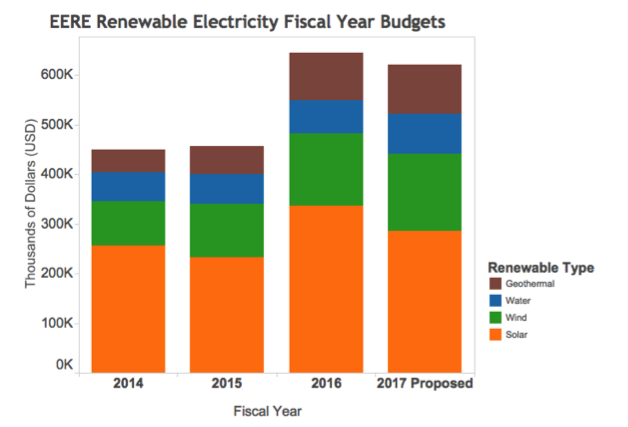
The WPTO, responsible for promoting most of the marine hydrokinetic (MHK) devices that you read about here on The Liquid Grid, is usually at the bottom of the totem pole in terms of funding. In fact, it received only about 2% of the total EERE budget in fiscal year 2016. So 2% of 0.091% equals…not much. If you think programs like these are a huge waste of taxpayer money, think again.
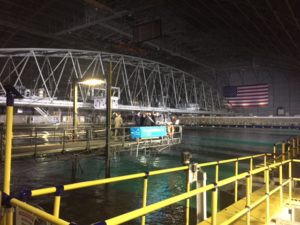
Despite the relatively small budget, the WPTO is doing excellent work in advancing marine renewables. Among their many activities, they award funding towards marine hydrokinetic projects in academia and industry that they see as beneficial to advancing the state-of-the-art. Remember the Wave Energy Prize? That was the Office’s work. The collection of projects that it invests in is its portfolio. This is different from a typical financial portfolio of stocks and bonds as the investments aren’t necessarily expected to make monetary returns, but rather to increase the knowledge bank.
Once a year the program opens up its portfolio for an outside opinion, the so-called Peer Review process. At this multi-day event a panel of experts hear status reports on each of the portfolio projects that have received government funding and then evaluate each on technical approach, progress, and relevance. The Peer Review is open to the public and this year I thought I’d check-it out.

It was a joint event, organized by the Wind Energy Technologies Office and the Water Power Technologies Office. With over 170 different presentations covering roughly $250 million in Federal funding, there was certainly a lot to information to go over. I was impressed by the number of people in attendance, which I would estimate at about 400 on the day I visited.
The presentations were organized into six tracks that covered issues relating to market acceleration, environmental impacts, technology development, and resource characterization. I observed some presentations within the Technology Research and Development track for MHK and picked-up some interesting insights.
Many projects were focused on weight reduction, or improving the power-to-weight ratio (PWR) of MHK devices. The PWR is simply power output divided by system weight and is a metric is used more commonly in transportation power systems. With marine hydrokinetic devices the thought is that lighter systems are easier to transport and install, and in some cases produce more bang for your buck. This is especially true with wind and tidal turbine blades; lighter blades require less energy to turn, thereby boosting performance.
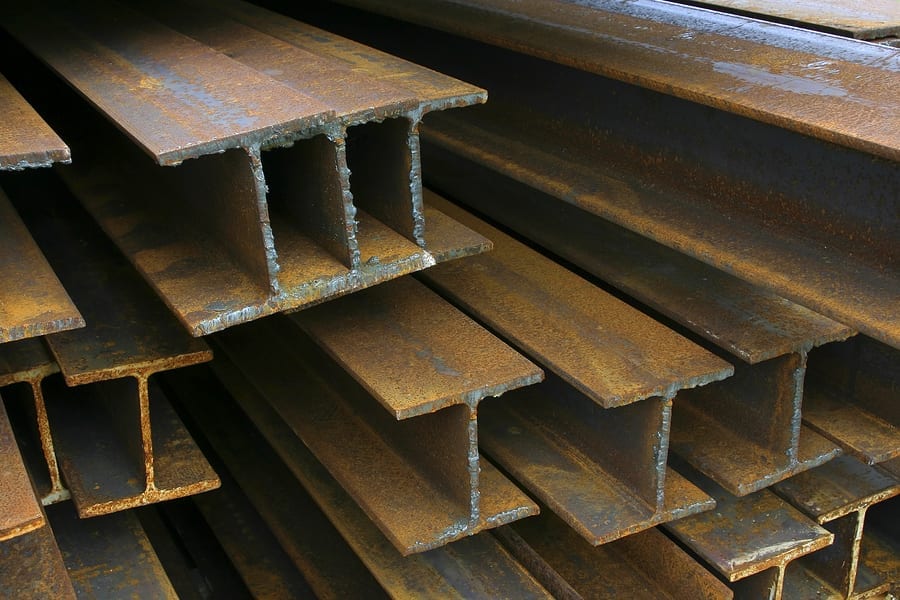
Steel is strong, relatively cheap and is great for manufacturing, all of which make it good for prototype development. But it is also quite heavy and prone to corrosion in seawater. Some of these full-scale devices can be massive in size and the subsequent weight from all that steel can make it difficult to transport them. Is there a way to make these devices lighter, but just as strong?

Several developers are investigating composite materials like fiber-reinforced plastics (FRP). FRP is a polymer, such as epoxy, reinforced with layers of fibers, like carbon or glass. FRP can provide the same strength as steel, but at roughly a quarter of the weight. The results from making a switch from steel to FRP look promising; in one instance a developer achieved a 9x improvement in the PWR. Marine devices aren’t the only ones adopting composite material, new Boeing commercial aircraft like the 787 Dreamliner are also using it for similar reasons. However FRP is not a silver-bullet: manufacturing unique geometries requires special tooling and the material is more expensive, in some instances 60% more than steel.
Another theme of the Peer Review was power takeoff (PTO) devices. These units are responsible for producing the useful electrical or mechanical power from MHK devices. On several instances I heard from developers that the PTOs are a huge cost driver for the overall system, so any improvements can lead to big savings to the bottom line.

There are two main challenges with getting useful power from a wave energy converter. First, the multi-directional nature of wave motion needs to be converted to single direction rotary or linear motion to drive a generator. Second, most WECs operate at low speeds, about one to two revolutions per minute for a rotary system. However, most generators need speeds greater than ten revolutions per minute to produce power efficiently. One WPTO funded project, ABB’s direct-drive low speed generator, addresses this second challenge.
This brings us to the last theme I noticed at the Peer Review: a need for a common metric. As I’ve mentioned in other posts, the MHK community hasn’t rallied behind a single type of design and the technologies are all over the place. With such vastly different technologies it’s very difficult to compare them. PWR, levelized cost of energy (LCOE), power density, and WPTO’s Average Climate Capture Width per Characteristic Capital Expenditure (whew!), or ACE, are all examples of metrics used, but they don’t capture the whole picture. The jury is still out on what metric to use, but to attract investors it must enable comparisons with other forms of energy, not just MHK devices.
All new technologies face a funding gap or ‘valley of death’: innovators need money to commercialize the technology, but investors are hesitant to invest when the technology is not proven. The WPTO, and others like it, help to bridge this funding gap. It may not have tons of money to throw around, but it is steadily advancing the industry, one research project at a time.
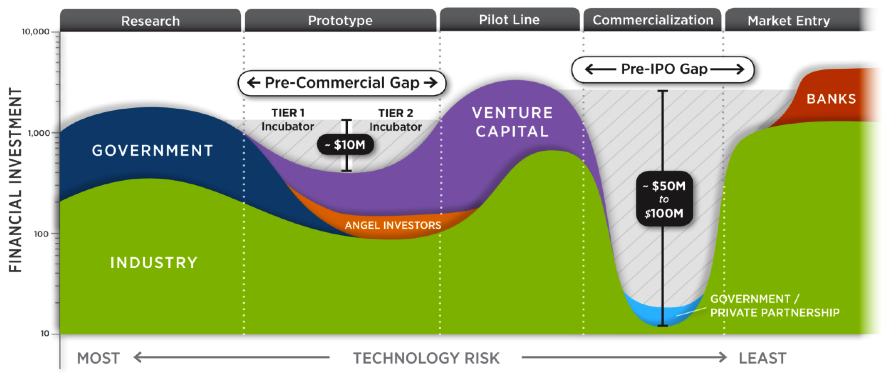
References:
- Energy Department Office of Energy Efficiency and Renewable Energy; https://energy.gov/eere/office-energy-efficiency-renewable-energy
- Water Power Technologies Office; https://energy.gov/eere/water/water-power-technologies-office
- EERE Budget Office; https://energy.gov/eere/about-us/office-budget
- WPTO and WETO Peer Review; Arlington, VA Feb 14-16, 2017

